Man Made Disaster DefinitionEvery man-made disaster offers different difficulties and calls for particular response and recovery measures. It is crucial to have detailed strategies to address each sort of disaster and work towards avoiding them from happening in the first place. One of the examples of Man-made Disaster is the Chornobyl Nuclear Power Plant in Ukraine which saw an explosion and fire that spewed radioactive material into the atmosphere, significantly impacting the environment and human health. 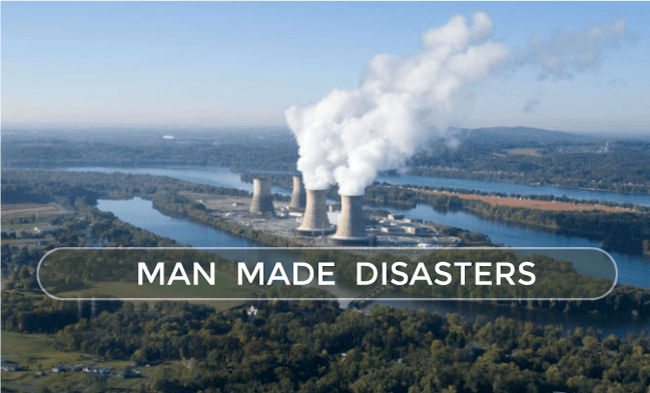
Man-Made Disasters Root CausesMan-made disasters have a wide range of causes, which are broadly categorized as follows: 1. Human Error Human error refers to errors people commit while carrying out their tasks or obligations. Miscommunication, a lack of training, and a disregard for the established protocol are a few examples. 2. Negligence Negligence is when reasonable precautions should have been taken to avoid calamities. Examples include properly storing hazardous items and performing more maintenance on equipment or infrastructure. 3. Intentional Acts Intentional acts are defined as deliberate actions committed by people or groups intending to do hurt or damage. Among them include terrorist activities, sabotage, and arson. 4. Poor Design or Construction This refers to errors in the planning or building facilities or machinery. Examples include equipment that is prone to failure or buildings that are not structurally sound. 5. Lack of Regulations or Oversight This refers to a failure by the government or other regulatory authorities to create and enforce the necessary regulations and oversight. Examples include monitoring of crucial infrastructure and insufficient safety measures in industrial settings. 6. Natural Disasters Exacerbated by Human Activity This category encompasses circumstances in which human activity such as inadequate infrastructure or bad land use planning makes natural disasters such as storms or floods worse. To stop future man-made disasters from happening, it is crucial to determine their underlying causes. This calls for an all-encompassing strategy that addresses the direct causes of disasters and their underlying causes, such as insufficient rules or a lack of control. Defending and Reducing Man-made DisastersMan-made catastrophe prevention and mitigation require a comprehensive strategy addressing the underlying causes of disasters, establishing and enforcing regulations and policies, and fostering resilience in infrastructure and communities. The following are some tactics for averting and lessening man-made disasters: 1. Risk Assessment and Planning Performing a risk assessment to pinpoint potential threats and weak spots and creating emergency plans that specify actionable steps and protocols. 2. Maintenance of Critical Infrastructure and Equipment Ensuring that vital infrastructure and equipment are kept in good working order to minimize the risk of breakdowns and malfunctions. 3. Regulations Establishing and implementing rules and regulations to ensure people and organizations follow safety guidelines is an oversight. 4. Education and Training Disseminating information about safety practices and procedures to people and organizations. 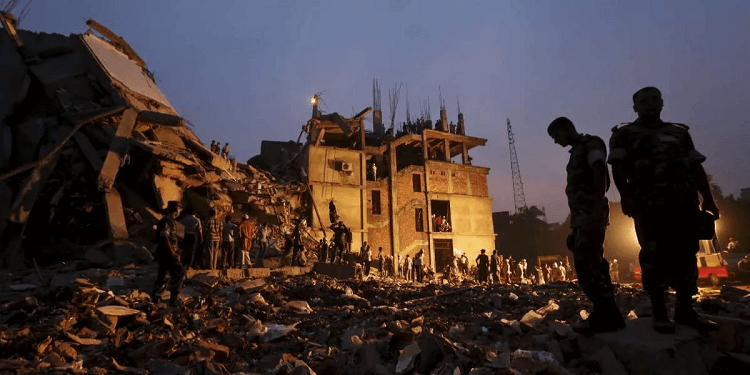
5. Environmental Protection Preventing long-term environmental harm and health effects by reducing pollutants and implementing sustainable practices. 6. Emergency Response Emergency response plans and procedures are created and tested to ensure a quick and well-coordinated response to disasters. 7. Resilient Communities Creating resilient communities through programs including community preparedness projects, disaster drills, and support for vulnerable populations ready to resist and recover from disasters. 8. International Cooperation Encourage international cooperation through programs including information exchange, technical support, and coordinated response activities to prevent and lessen the impact of catastrophes. 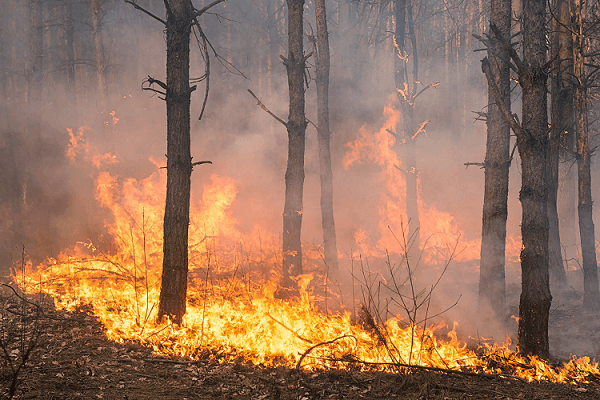
It is possible to prevent or lessen the effects of man-made catastrophes by putting these techniques into practice, as well as to create infrastructure and communities that are more resilient. Response and Recovery to Man-made DisastersTo address the immediate effects of a man-made disaster, support impacted people and communities, and rebuild infrastructure and systems, response and recovery activities must be coordinated. A few crucial actions in the reaction and recovery phase are listed below: 1. Emergency Response As soon as a crisis strikes, organizations, and emergency responders should launch a prompt, well-coordinated response to lessen its immediate effects. This could involve search and rescue, medical attention, and evacuating the affected people. 2. Humanitarian Assistance Giving people who have been affected by the tragedy food, drink, shelter, and medical attention is known as humanitarian help. 3. Infrastructure Repair and Restoration Repairing and repairing essential infrastructure, such as roads, bridges, water and sewage systems, and power and communications networks, is necessary to return them to their pre-disaster condition. 4. Psychological Support Giving affected people and communities psychological support will help them deal with the effects of trauma and stress. 5. Economic Recovery Promoting the local economy's recovery by giving impacted people and businesses financial support, generating job possibilities, and assisting the revival of interrupted industries. 6. Community Engagement Including affected communities in decision-making, rebuilding initiatives and recognizing and addressing their unique needs. 7. Long-Term Planning Creating long-term planning and strategies for risk reduction, such as enhancing infrastructure, developing better early warning systems, and enhancing community resilience to upcoming disasters. By taking these actions, it is possible to rebuild infrastructure and processes to be more disaster-resistant while assisting affected individuals and communities in their recovery. By locating and resolving the disaster's underlying causes and putting prevention measures in place, successful response and recovery activities can also aid in preventing future man-made disasters. Lessons from Man-Made DisastersSignificant human casualties, environmental harm, economic disruption, and societal unrest have all been brought on by man-made disasters. However, they have also imparted crucial lessons that will direct future disaster management efforts. Man-made catastrophes have driven home the importance of performing risk assessments to identify potential hazards and vulnerabilities and building emergency plans that include response tactics and procedures. Preparation for man-made disasters is crucial to decrease the consequences of disasters, save lives, and help rehabilitate impacted individuals and communities. Risk Evaluation and Management for Anthropogenic DisastersEnvironmental pollution, terrorist attacks, cyberattacks, and industrial mishaps are a few man-made disasters that pose serious dangers to human life, the environment, and economic growth. Effective risk management can significantly decrease the frequency and severity of such calamities. 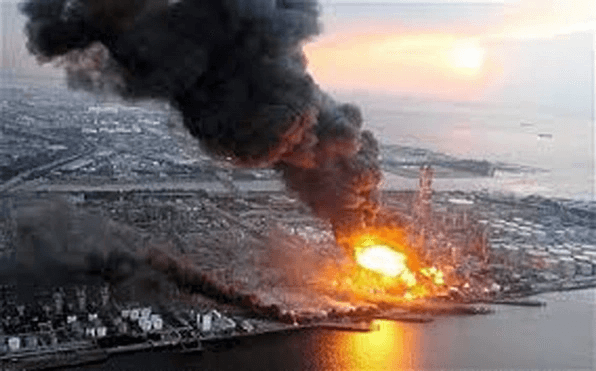
Identification of prospective risks, analysis of their chance of occurrence, and evaluation of their potential effects are all parts of the risk assessment process. Identification of hazards, examining vulnerabilities, and quantifying risk are all parts of the risk assessment process. Identification of hazards entails locating prospective threats that could cause a catastrophe, including chemical spills or terrorist attacks. Identification of the populations, assets, and infrastructure that are most vulnerable is a component of vulnerability analysis. Analysing the likelihood and effects of various hazards is part of risk estimation. Creating and implementing solutions to reduce the risks found through risk assessment constitutes risk management. Risk reduction, readiness, reaction, and recovery are all parts of the risk management process. Implementing precautions to avoid or lessen potential risks, such as raising safety standards or cutting back on the use of hazardous materials, is known as risk reduction. Developing preparations and processes to handle a disaster, such as emergency evacuation plans or communication tactics, is part of being prepared. Responding is taking steps to lessen the effects of a disaster, such as offering medical assistance or putting emergency plans into place. Recovery includes restoring the impacted communities, infrastructure, and environment to how they were before the disaster. A multi-stakeholder and multi-level strategy encompassing many sectors, levels of government, and communities is necessary for effective risk assessment and management. Stakeholder participation may guarantee that various viewpoints, priorities, and needs are considered during the risk assessment and management process. For effective risk management, stakeholders must communicate and work together. The complexity and ambiguity of the risks involved must be considered in risk assessment and management for man-made disasters. Strategies for risk management must be adaptable and flexible to deal with new hazards and shifting conditions. Disaster strategies and plans can benefit from incorporating risk assessment and management to help ensure efficient and well-coordinated risk management operations. In conclusion, good risk assessment and management are essential to managing man-made disasters. Identification, analysis, and mitigation of possible hazards can improve community resilience by lowering the likelihood and impact of disasters. Effective and well-coordinated risk management activities depend on the participation of stakeholders and the integration of risk assessment and management into catastrophe policies and plans. International Collaboration and Cooperation in the Management of Man-Made DisastersCollaboration and international cooperation are essential elements of successful man-made catastrophe management. Human-caused disasters frequently have transnational effects, necessitating coordinated responses from several nations and international organizations. To effectively manage man-made disasters, international cooperation and coordination are essential. 1. Information and Best Practices Exchange Countries and international organizations can exchange information and best practices for managing man-made disasters thanks to international cooperation. This information sharing can encourage learning from the past and increase the effectiveness of disaster management operations. 2. Development of International Standards and Guidelines International organizations, like the United Nations and the World Health Organisation, have created international norms and recommendations for disaster management. These standards and recommendations offer nations a common framework for creating disaster management plans and policies and guarantee consistency in disaster management initiatives. 3. Joint Training and Exercises International organizations and nations can help build capacity and improve readiness for man-made catastrophes by participating in joint training and exercises. Additionally, these activities may enhance coordination and communication between various nations and organizations. 
4. Resource Mobilization International cooperation can make it easier to mobilize resources to manage man-made disasters. Countries and international organizations can support disaster management efforts in afflicted countries with financial, technical, and human resources. 5. Coordination of Response and Recovery Operations During and after a man-made disaster, international collaboration is crucial for coordinating response and recovery operations. International organizations can make it easier to coordinate relief efforts and ensure that aid is appropriately distributed to those who need it the most. 6. Addressing the Root Causes Addressing the causes behind man-made disasters might also need international cooperation. Reducing the danger of man-made catastrophes can be accomplished by addressing factors like poverty, social injustice, and environmental degradation. Effective management of man-made disasters requires global coordination and cooperation. Collaboration may improve preparedness, response, and recovery efforts, as well as aid to lessen the effects of disasters on the communities that are affected by them and increase resilience. Prioritizing global cooperation and collaboration in policies and strategies for man-made disasters is essential, including all relevant parties, governments, international organizations, civil society, and the commercial sector. Man-made Disasters Psychological and Social EffectsHuman-made disasters may have a profound psychological and societal impact on those affected. Long-lasting and has an impact on people, families, communities, and even entire societies. Several significant elements of the psychological and social effects of man-made disasters are as follows: 1. Trauma and Mental Health Man-made disasters can lead to trauma and mental health issues such as post-traumatic stress disorder (PTSD), depression, anxiety, and drug misuse. These issues may linger long after the crisis has passed, especially if people don't get the assistance and care they need. 2. Loss and Grief Man-made catastrophes can result in tremendous loss and grief, including the death of loved ones and the destruction of homes, assets, and livelihoods. These losses may result in emotions like sadness, rage, and despair. They may also have an impact on social networks and support systems. 3. Social Disruption Human-made disasters can sabotage social networks and interpersonal ties, resulting in loneliness and deteriorating social norms and trust. This disturbance may be especially severe for vulnerable populations, such as children, older people, and those with impairments. 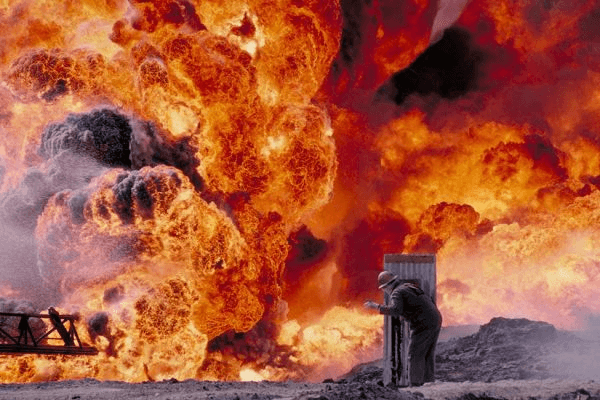
4. Stigma and Prejudice Because of their experiences, those impacted by man-made catastrophes may also encounter stigma and prejudice. This can involve prejudice based on race, religion, or socioeconomic standing, worsening psychological and social effects. 5. Resilience and Recovery Despite the negative effects of man-made catastrophes, many people and communities show extraordinary resilience and can recover from the disaster with help and resources. Promoting social ties, making mental health treatments available, and re-establishing social and economic institutions can all contribute to resilience. The psychological and social effects that man-made catastrophes have on the affected populations must be considered in disaster management strategies and programmes. This could entail opening access to social support networks, promoting mental health services, and combating discrimination and stigma. Affected people should be included in decision-making processes, and community engagement should be prioritized in disaster management initiatives. Legal and Ethical IssuesTo safeguard impacted communities and uphold their rights, man-made catastrophe management raises several moral and legal concerns that must be resolved. The following are some significant legal and moral concerns in the management of man-made disasters: 1. Responsibility and Liability In man-made disasters, determining who is to blame for the disaster and who should be held accountable for the losses can be difficult. When numerous parties are engaged, such as government organizations, commercial enterprises, and people, this problem can become especially complicated. 2. Human Rights Human rights, such as the right to life, health, and sufficient shelter, can significantly impact man-made catastrophes on the affected populations. Plans and strategies for disaster management must prioritize safeguarding human rights and ensuring that impacted communities are not exposed to abuse or discrimination. 3. Resource Allocation Man-made disasters can lead to severe resource shortages, and resource allocation can lead to moral and legal difficulties. Resources must be distributed fairly and equally, and vulnerable populations should not be singled out for discrimination in these decisions. 4. Information Access Information access is essential for managing man-made disasters because it enables those affected to make educated choices and participate in decision-making. Policies and procedures for disaster management should place a high priority on transparency and make sure that those who will be impacted have access to timely and accurate information. ConclusionA Broad Approach is needed to Man-Made Disasters. Response operations should include swift and coordinated action, including search and rescue, medical attention, and evacuation of affected people, to decrease the immediate effects of a disaster. The key objectives of recovery operations should include repairing and restoring essential infrastructure, assisting harmed individuals and communities, and fostering economic recovery.
Next TopicMode Definition in Statistics
|
 For Videos Join Our Youtube Channel: Join Now
For Videos Join Our Youtube Channel: Join Now
Feedback
- Send your Feedback to [email protected]
Help Others, Please Share










